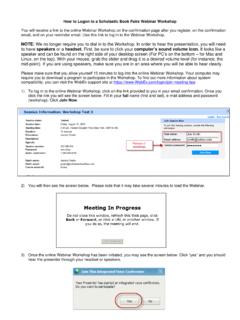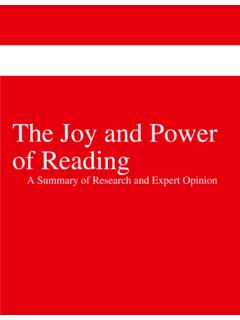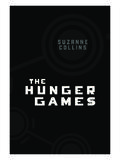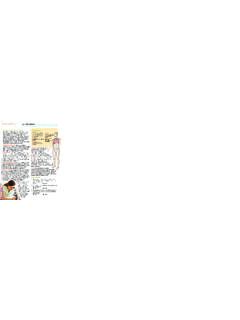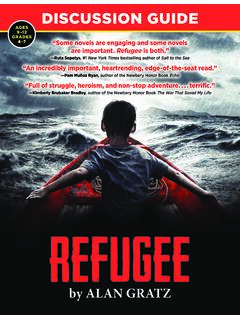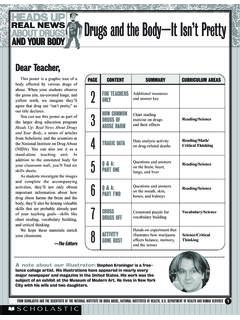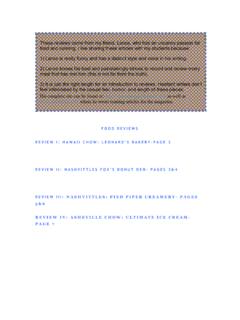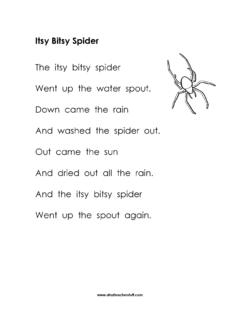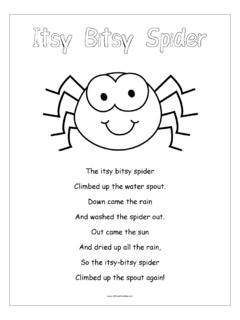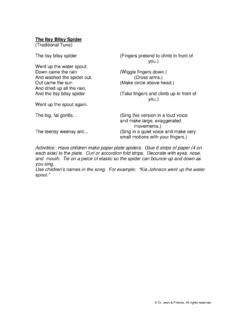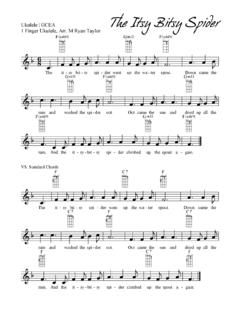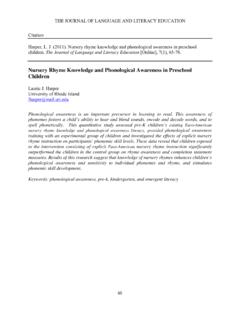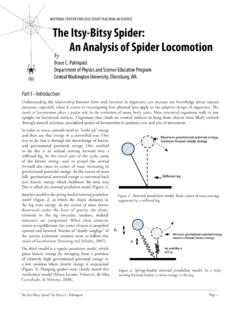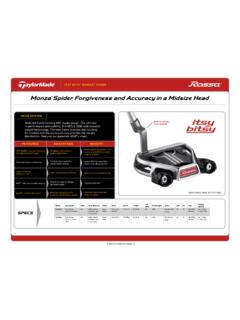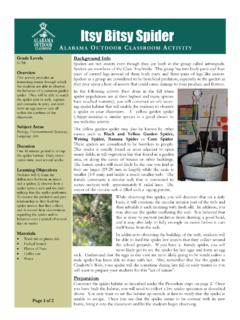Transcription of Teaching the Book OVERVIEW Book Summary - Scholastic
1 TEACHER GUIDE 1 2012 SI ALL RIGHTS RESERVEDT eaching the book The itsy bitsy spider is climbing up that waterspout again. Only, this time, the spider brings along a bag of tricks! Use this colorful and surprising version of The Itsy bitsy spider to teach students how to retell a story with sequence words and how to listen for rhyming words. Activities engage students in learn-ing more about spiders, making a spider web, and creating a variation on the traditional Focus: Traditional SongComprehension Focus: Retelling With Sequence WordsLanguage Focus: Rhyming WordsBook SummaryThis itsy bitsy spider wears bright pink sneakers, a backpack, and climbs up a rope!
2 Students will recog-nize the opening rhyme of the traditional tale as the spider gets washed out of the waterspout by the rain. But as soon as the sun comes out again, the spider climbs back up to the roof and sets to work building a home. With the help of blueprints and tools pulled from her backpack, the spider creates a sturdy and rainproof , then not again clouds cover the sun and the rain comes down! The itsy bitsy spider doesn t worry though, because she is prepared. She pops open her purple umbrella, climbs the spout again, and settles into her fine new home.
3 Young students will have fun singing along with the story, practicing the finger play for the song, and meeting this engineering THE ILLUSTRATORC onstanza Basaluzzo was born in Argentina and graduated from the Universidad of Buenos Aires. She has concentrated her career as an artist on graphic communication for students. Her style interprets the world from a child s point of view with bright colors, humor, and attention to details. She works in a digi-tal format, creating whimsical worlds that delight students around the world. book STATSG rade Level Equivalent: PreK K Ages: 3+Lexile Measure : AD610L Pages: 24 Genre: Traditional SongSubject/Theme: Spiders, SongsOVERVIEWC ommon Core State StandardsReadingWritingListening & SpeakingLanguageGrade , , , , , ,1, , 2 TEACHER GUIDEGet Ready to Read Pre-Reading Activities A Favorite Traditional Song Introduce students to the traditional song of The Itsy bitsy spider by singing it or by playing a video of the rhyme with the accompanying finger play.
4 You can find several rendi-tions of the rhyme on the Internet. Show students the Kids Library website to see this animated version of the rhyme which includes the finger play set to lively music, by visiting: students listen to the rhyme, encourage them to add the finger play motions. Then review the finger play motions with them. Show me how the itsy bitsy spider climbs up the waterspout. Show me how the rain comes down and washes the spider out. Show me how the sun comes out and dries up all the rain. Now show me how the itsy bitsy spider climbs up the spout again!
5 Preview and Predict Ask students to look at the cover of The Itsy bitsy spider . Ask them what is spe-cial or unusual about this spider . Discuss the picture including the spider s shoes, ruler, and hammer. Vocabulary Rhyming Words Encourage students to listen for the following words and the words they rhyme with as you read the book . Encourage them to look for clues in the illustrations for the words meanings. Use Resource #1: Vocabulary Cards on page 7 and distribute copies to away found sun long scared BIG QUESTIONC ritical Thinking Ask students to think about this question as they read.
6 Write the question on chart paper and display it. Explain that you will ask them to answer the question after they have read the book . What is clever about this spider ?STORIA ENRICHMENTSThis book will be available as a Storia enriched e- book in June GUIDE 3As You Read Reading the book Modeled Reading Model a fluent reading of the book , emphasizing the rhyming in the text that creates humor and also cues students to remember the sequence of events in the song. Project the pages onto a whiteboard or screen and guide students to follow along as you Reading Reread the book , this time encour-aging students to say or read the rhyme aloud.
7 When reading aloud, pause so students can fill in missing words. Project the book , and point out the illus-trations to help them locate clues. Read the book another time to repeat the exercise. Comprehension Focus Retelling With Sequence Words Explain to stu-dents that in the song things happen in a sequence, or order. Words like first, then, next, and finally are called cue words because they help describe the sequence of a story in time the graphic organizer on Resource #2: Retell-ing With Sequence Words to model for students how to use sequence cue words to retell the events of the rhyme.
8 Project the page on a whiteboard or pass out copies to students. Then lead the students through a retelling of the first rhyme in the book us-ing the sequence cue words. Model: We re going to retell the rhyme togeth-er. You can look at the illustrations in the book to help you remember the order that things happen. How will we begin telling about the itsy bitsy spider ? We ll start with the word first. First, the itsy bitsy spider climbed up the what? The waterspout! Then, down came the what? Rain .. Have students volunteer the remainder of the se-quence of events in the rhyme.
9 Ask them to repeat the cue word at the beginning of each line as they fill in the missing You Read Questions to Discuss Lead students in a discussion of these focus story Traditional Song Have you heard the song about the itsy bitsy spider before? Where did you hear it? Why do you think children sing and like the song so much? (Sample answers: My babysitter sang it to me. I like it because it rhymes and the hand motions are fun.)2. Using Sequence Cue Words What happens after the itsy bitsy spider builds a web on the rooftop? (Sam-ple answer: The web helps keep her safe from the rain.)
10 3. Rhyming Words Which of the vocabulary words rhymes with say and day? (away) Which word rhymes with bun and run? (sun) Which word rhymes with song and wrong? (long)WORDS TO KNOWR hyming Words Ask students the following riddles based on the vocabulary words. The riddles include a rhyming clue and a meaning clue. Have stu-dents volunteer the answers or hold up the vocabulary card that answers each rhymes with spout and means the opposite of in. (out)It rhymes with done and shines during the day. (sun)It rhymes with stay and means to be gone.
